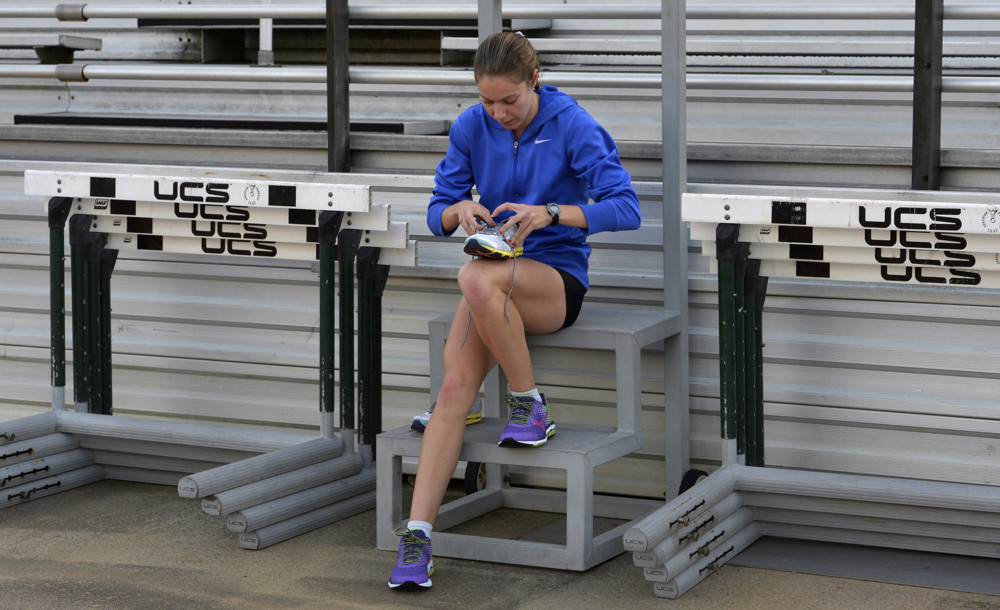By Barbara Barker
Newsday
WWR Article Summary (tl;dr) This week marks the 45th anniversary of Title IX. Though the law is most often associated with the growth of women’s and girls’ athletics, it paved the way for women to get the education they needed to enter a myriad of professions.
Newsday
It is just one sentence, 37 words crammed quietly into an education bill, yet it changed the direction of millions of lives. Including my own.
Forty-five years ago this coming Friday, Title IX of the Education Amendments Act of 1972 was signed into law by President Richard Nixon.
Though the law is most often associated with the growth of women’s and girls’ athletics, it paved the way for women to get the education they needed to enter a myriad of professions.
It’s fair to say my life would not be what it is today if it weren’t for Title IX.
I would not have gone to graduate school. I would not have been hired as a sports writer and I wouldn’t have a daughter who participated in a number of team sports up through high school and now heads off to college believing she can be anything she wants to be.
I had just completed fifth grade when Title IX passed, barely old enough to understand the concept of the legislative branch yet alone know what kind of impact laws could have on people’s lives. Yet there was a group of devoted activists in Washington who did.
Many some of them, including congresswomen Patsy Mink and Edith Green, are unfortunately no longer living. One of the most ardent supporters, Birch Bayh, is and he couldn’t be happier with the way things have turned out.
“I did not realize the impact that one sentence (37 words) would have,” the former U.S. senator from Indiana said in an email interview last week. “I knew the need for it, but I could not have anticipated how wonderfully it would turn out. My thoughts were about gender equality in education, in academics. I knew that women were routinely refused admission to many colleges, in many academic disciplines, received almost no scholarships, and that even women faculty were asked to join the spouses club on campus, not the faculty groups. I had no idea what it would mean for girls and women in sports!”
Indeed the word athletics is never mentioned in Title IX, which simply reads: “No person in the United States shall, on the basis of sex, be excluded from participation in, be denied the benefits of, or be subjected to discrimination under any educational program or activity receiving Federal financial assistance.”
Though this is something we take for granted now, it’s hard to overstate just how radical this notion was 45 years ago. Women were routinely denied entrance into schools, their applications often being viewed as a bid to take the place of a man. According to the American Bar Association, only 12.1 percent of first-year law students in 1972 were freshman. Now, women account for 51 percent of those enrolled in law school.
Bayh recalled an Indiana constituent calling him before the passage of Title IX to talk about his daughter.
“He said that his daughter dreamed of becoming a veterinarian, working with horses, but was denied admission to Purdue. I called the president of Purdue, who told me, “Birch, we just didn’t think little girls would like animals much less big animals!”
Do I have to tell you what happened? She was admitted. And, today, more than half of all vets are women, I’m told.”
Bayh was also the chief sponsor in the senate of the Equal Rights Amendment (ERA), which was met with some loud and strong resistance.
“At the time, my ERA bill was in Conference Committee and I wasn’t sure we could get it out,” Bayh said. “But, because the Higher Education legislation was before us, I thought, ‘Well, let’s at least insert language of equality into the Higher Education reauthorization in case the ERA doesn’t pass.’ ”
The ERA, of course, never became law, which only magnifies the importance of Title IX when it comes to the enforcement of opportunity. While the impact on education has been its furthest reaching legacy, Title IX’s impact on athletics has been dramatic.
In the 1971-1972 school year, one out of 27 female high school students (a total of 294,014 girls), participated in high schools sports, according to the National Federation of State High School Associations. Last year, 3.2 million girls, roughly 40 percent of female high school students, participated in school sports.
There are also more women playing college sports than ever before, though funding and scholarships still fall short of what men receive. Even though women now account for more than 50 percent of all college students, women account for only 43.5 percent of athletes competing in NCAA sports. In 1972, however, only 15.2 percent of all college athletes were women.
Bayh, who ran for the Democratic nomination for president in 1976 and served 18 years in the senate, said Title IX ranks “at the top. Hands down” when he considers his legacy.
As I watch my daughter head off to college believing she can be anything she wants to be, I couldn’t agree more.














































































































































































































































































































































































